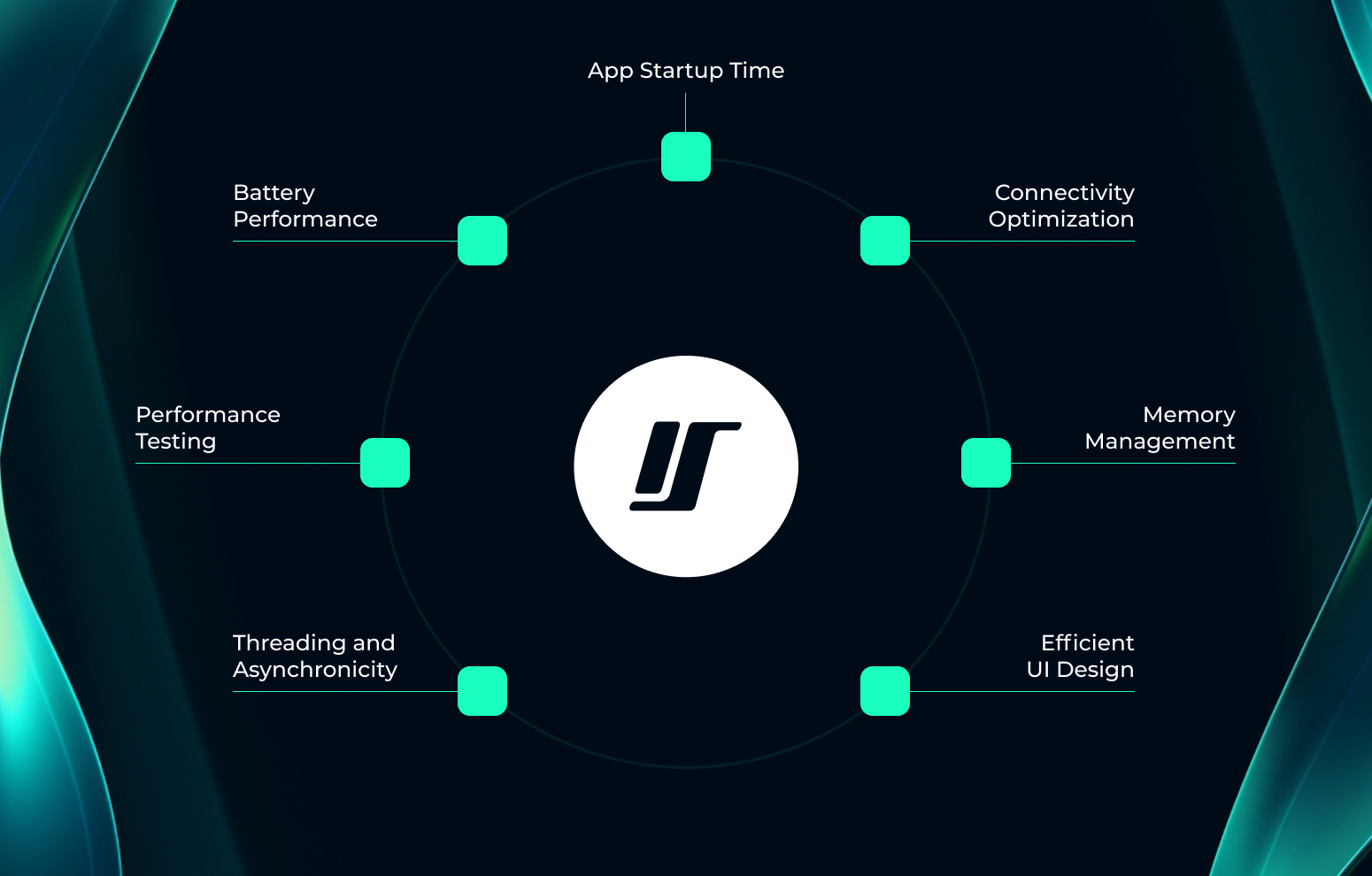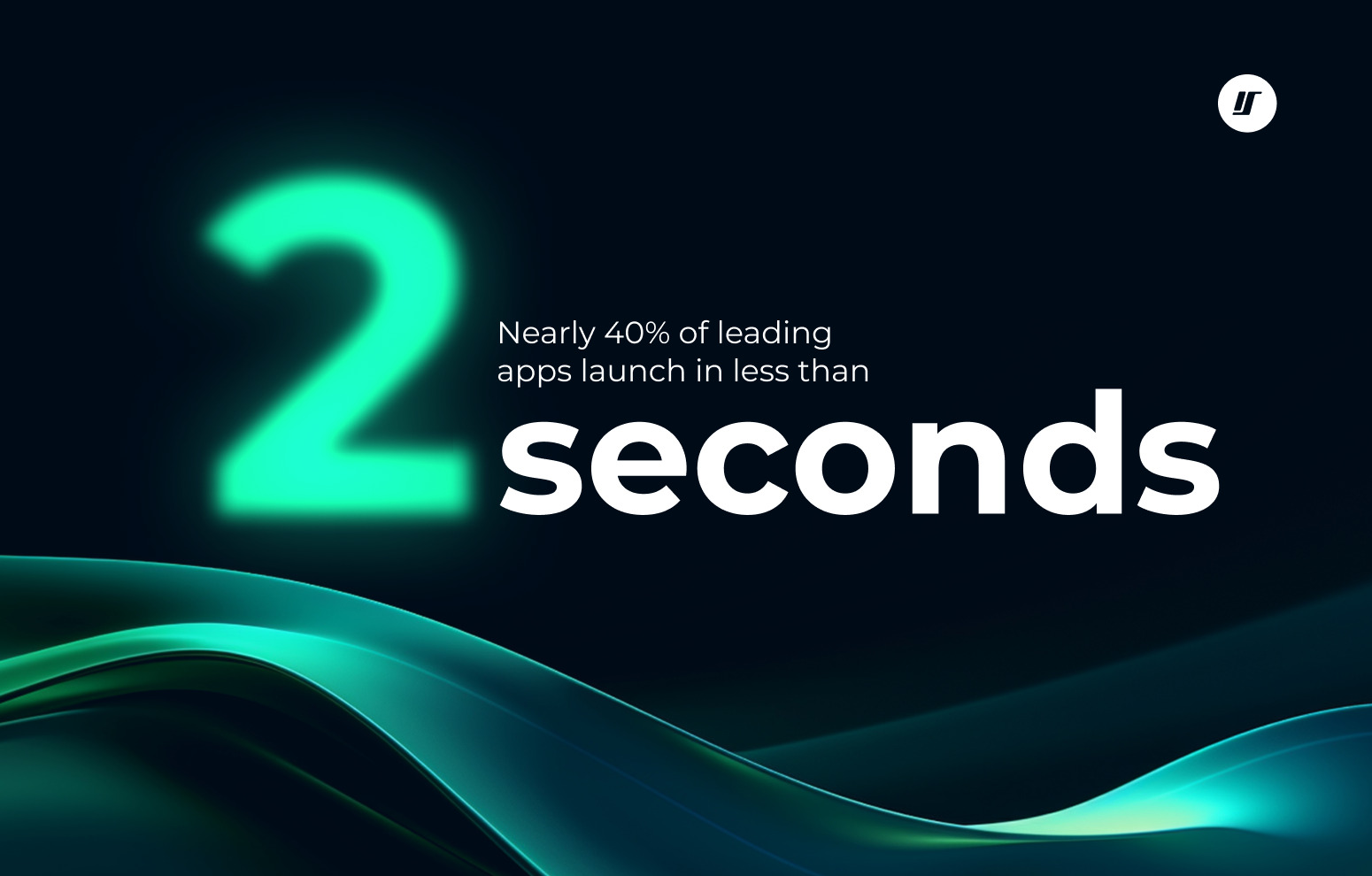The performance of an Android app is more than just a technical detail – it’s a crucial factor that shapes user engagement, satisfaction, and, ultimately, business success. A well-performing app, through effective Android app performance optimization, creates a seamless experience, encouraging users to interact longer, return frequently, and even recommend the app to others. Whether it’s ensuring a fast startup time, optimizing memory usage, or minimizing battery consumption, each technical aspect plays a significant role in determining how users perceive and engage with an app. Poor performance, on the other hand, can quickly lead to frustration, uninstalls, and negative reviews, damaging not only user retention but also your brand’s reputation.
In this article, we’ll dive deep into essential tips for Android app performance optimization, focusing on key areas that directly impact the user experience, such as smooth navigation, efficient resource handling, and reducing latency. By addressing these areas, developers can ensure their apps not only meet user expectations but also drive increased user retention and long-term revenue growth. Whether you’re building a new app or looking to improve app performance in an existing one, these insights will help you stay ahead in the competitive app market while contributing to the overall success of your business through consistent performance improvements.


First Impressions Matter: App Startup Time
The first interaction users have with your Android app is its app startup time, and that initial experience sets the tone for how they perceive the app moving forward. Studies reveal that 40% of top-performing apps launch in under 2 seconds, and 70% within 3 seconds. This responsiveness is not just a technical achievement but a vital factor in retaining users. A slow startup often leads to higher uninstall rates, damaging user retention. Users expect quick access to app features, and any delays can negatively impact the app’s performance, potentially costing you a loyal audience.
Key Tips to Optimize Startup Time
Load Necessary Content First
Prioritize loading the most essential elements that users need right away, such as the user interface and key functionalities, while deferring non-critical tasks like background checks, data syncing, or updates. This ensures that users can start interacting with the app as quickly as possible without being bogged down by unnecessary processes.
Optimize for Different Startup States
An app can launch in three main states – cold, warm, and hot – each affecting startup time differently. Cold starts, where the app is launched from scratch, typically take the longest. By focusing on optimizing cold start times, such as by preloading certain assets or reducing dependencies, you can naturally improve warm and hot starts as well, delivering a faster, smoother experience in all cases.
Use Splash Screens Effectively
While splash screens might seem cosmetic, they play an important role in enhancing user perception. By displaying branded visuals or engaging animations during loading, splash screens help keep users entertained and make the wait feel shorter, thus preventing the perception of delays.
Reduce App Size and Complexity
A smaller, leaner app tends to load faster, improving app performance overall. This can be achieved by reducing unnecessary libraries, compressing resources, and minimizing the app’s overall footprint. Simplifying the codebase and eliminating redundant features not only helps speed up app launch time but also ensures smoother performance during usage.


Efficient Network Handling: Connectivity Optimization
Apps often depend on internet connectivity for updates, syncing, or streaming. Inefficiently managing network connections can lead to fast data consumption and battery depletion. This impacts usability, retention, profitability, and the app’s performance. Optimizing network requests is crucial for ensuring both technical efficiency and a seamless user experience.
Key Strategies for Optimizing Network Requests
Batching Requests
One of the most effective methods for reducing battery consumption is batching network requests. Every time a device wakes up its WiFi or mobile network radios, it consumes a significant amount of power. By grouping multiple requests together, you minimize the number of times the device needs to wake these radios, leading to substantial power savings. This also improves the app’s overall performance by reducing the back-and-forth network traffic, ensuring smoother user interactions.
Adaptive Networking
Adaptive networking takes power and data optimization to the next level by adjusting network usage based on the current device and network conditions. For instance, when a user is connected to WiFi and their phone is charging, the app can take advantage of this situation to fetch more data or perform background tasks, leading to performance improvements. Conversely, if the user is on a mobile network with a low battery, the app can scale back its data requests, prioritizing only essential tasks. This intelligent networking ensures the app is considerate of both the user’s battery life and data consumption, improving overall satisfaction and contributing to a smooth user experience.
Efficient Use of APIs
Reducing the frequency of API calls and consolidating multiple API responses into a single request can greatly improve both power efficiency and performance. Consider caching certain data locally so that the app doesn’t need to make repetitive network calls for information that seldom changes. This reduces both data usage and power consumption, as well as providing users with quicker access to necessary information.
Handling Network Failures Gracefully
Poor or fluctuating network connections can lead to repeated attempts to complete failed requests, which can negatively impact app performance and further drain battery life. Designing your app to handle network failures gracefully by reducing retries or deferring non-urgent tasks until the connection stabilizes is key. Implementing retry mechanisms with exponential backoff, where retries become less frequent over time, helps conserve resources and maintain Android app speed.
Avoiding App Crashes: Memory Management
Effective memory management is crucial for ensuring Android app performance operates smoothly and reliably. Poor memory handling can cause an app to crash. With the variety of Android devices on the market, each with different memory constraints, optimizing your app to handle memory efficiently can significantly improve its performance, stability, and overall Android app performance, even under heavy usage or on devices with limited resources.
Memory Optimization Techniques
- Remove unused libraries and assets to reduce the app’s memory usage, contributing to app performance optimization and improving performance, especially on lower-end devices.
- Load images at appropriate resolutions to avoid memory overload. Use scaling, memory-efficient formats, and lazy loading to minimize memory consumption.
- Regularly monitor memory use to detect leaks and manage garbage collection, ensuring efficient memory allocation and preventing crashes, which is essential for effective app performance optimization.
- Prevent memory leaks by using weak references, ensuring objects are cleared when no longer needed. Be cautious with context usage to avoid memory retention.
- Reuse objects and reduce frequent object creation to ease the burden on memory and the garbage collector, ensuring smooth app performance.


Enhancing User Experience: Efficient UI Design
A well-crafted user interface is at the heart of creating a smooth, intuitive app experience that keeps users coming back. Beyond aesthetics, an efficient UI contributes significantly to app performance optimization and the responsiveness of an app. Users today expect fast, fluid user interactions without delays or glitches. As such, optimizing the UI is essential not only for providing visual appeal but also for ensuring that the app runs smoothly and efficiently across different devices. A seamless UI enhances user engagement, increases satisfaction, and minimizes the risk of churn.
Key Methods for Optimizing UI
Simplicity and Clarity
Keep the UI clean and intuitive, minimizing elements and animations to reduce processing power. A simple, purposeful design improves both user experience and performance.
Optimizing Layout Hierarchies
Use flat, efficient layout structures to reduce rendering time and enhance responsiveness, particularly on lower-end devices.
Lightweight Graphics and Compression
Use scalable vector graphics and compress large images to reduce memory usage and speed up loading time, ensuring smoother performance on all devices.
Minimizing Overdraw
Reduce overlapping UI elements to minimize overdraw, which improves rendering and enhances the app’s performance, leading to smoother transitions and scrolling.
Efficient Animations
Use animations sparingly and optimize them with hardware acceleration to avoid slowing down performance, especially on low-powered devices.
Keeping Apps Responsive: Threading and Asynchronicity
App responsiveness is crucial for a positive and seamless user experience. Long-running tasks like network requests or file operations can block the main thread, leading to sluggish performance or unresponsiveness, which frustrates users. To prevent this and optimize Android app performance, threading and asynchronicity are key to maintaining smooth app interactions.
Best Approaches
- Move heavy tasks, such as network calls and file processing, off the main thread to prevent UI interruptions. This ensures the app remains responsive during user interactions like scrolling and tapping.
- Use asynchronous techniques to handle tasks such as data fetching or input/output operations without blocking the user interface, making the app feel more fluid and responsive.
- Ensure background tasks are properly linked to the app’s lifecycle, so they pause or cancel if a screen or activity is closed, avoiding wasted resources and improving the app’s performance.
- Schedule background tasks to run efficiently in the background without slowing down the app’s main functions, keeping it responsive to user input.
- Manage multiple tasks or operations running in parallel without overloading the system, ensuring that the app runs smoothly even when handling complex operations.
- Offload complex user interface tasks, such as rendering graphics or processing large data, to the background to maintain smooth interactions and avoid slowdowns, ensuring optimal app performance.
Ensuring Consistency Across Devices: Performance Testing
With the wide variety of Android devices and network conditions, maintaining Android app performance consistency is crucial. Users expect smooth performance regardless of device or network quality. Android app performance testing identifies potential bottlenecks and helps address performance issues, ensuring that the app functions optimally across different environments. This performance optimization process enhances the overall user experience, keeping the app reliable and efficient under varying conditions.
Key Areas to Focus on in Performance Testing
Load and Stress Testing
Simulate high user activity to ensure an app can handle heavy loads without crashing or slowing down. Stress testing pushes an app beyond normal usage to identify potential weaknesses and improve scalability.
Response Time Testing
Measure how quickly the app responds to user actions, such as tapping or scrolling. Identify and fix slow areas to improve responsiveness and prevent user frustration.
Network Performance Testing
Test the app under various network conditions, like slow or unstable connections, to ensure it remains responsive. Optimize network requests with caching and API call improvements to handle low-bandwidth situations effectively.
Keeping Users Active: Battery Performance
Battery efficiency is one of the most critical factors in delivering a seamless and user-friendly experience for Android apps. In today’s mobile-centric world, users are increasingly mindful of how much power an app consumes. Heavy battery usage by an app can discourage users from continuing to use it, ultimately causing them to seek alternatives. On the other hand, apps that are optimized for battery efficiency allow users to interact with them for extended periods without concern.
Methods for Optimizing Battery Performance
Optimizing Location Updates
Location services can be a significant battery drain. Use low-power methods like WiFi or cell tower triangulation when high accuracy isn’t necessary. Implement geofencing to only activate location tracking when needed.
Intelligent Data Syncing
Sync data intelligently, only when connected to WiFi or during low-activity periods. Let users control syncing frequency through settings to manage battery usage.
Limiting Background Services
Background processes like syncing data or running push notifications can drain battery and impact the app’s performance. Optimize by reducing the frequency of these tasks or deferring them until the device is charging or connected to WiFi, ensuring more efficient battery usage.
Managing Push Notifications Efficiently
Limit the number and frequency of notifications, bundle them when possible, and reserve high-priority notifications for critical updates to reduce network and battery strain.
Reducing Animations and Visual Effects
Simplify or reduce non-essential animations and visual effects to lower battery consumption, contributing to app performance optimization. Offer a “battery-saving” mode to give users more control over performance.
Android app performance optimization is no longer just a technical necessity – it is a business imperative. In an increasingly competitive mobile landscape, app performance directly influences customer retention, user engagement, and revenue generation. Users today demand fast, seamless, and efficient experiences across a wide range of Android devices, and businesses that fail to meet these expectations risk losing their audience to competitors. In September 2024 alone, around 29,000 mobile apps were launched on the Google Play Store. Whether it’s improving app startup time, reducing battery consumption, optimizing UI performance, or managing memory more effectively, each aspect of app performance plays a critical role in shaping the user experience and driving business growth.


Why Choose Intellectsoft for Your Mobile App Development
Intellectsoft is a trusted digital transformation partner, specializing in mobile app solutions that prioritize performance and user satisfaction. Since 2007, we have been focused on delivering innovative mobile apps that drive business success. With over 600 custom apps developed and 250+ expert developers, Intellectsoft provides full-cycle development services – from concept to delivery and ongoing support.
Whether you’re looking to create a consumer-facing app or an enterprise solution, Intellectsoft’s expertise spans native and cross-platform development, ensuring your app performs seamlessly across all devices. Our expertise in optimizing Android app performance ensures that your app meets user expectations, regardless of the hardware or software environment.
Subscribe to updates
Source link











